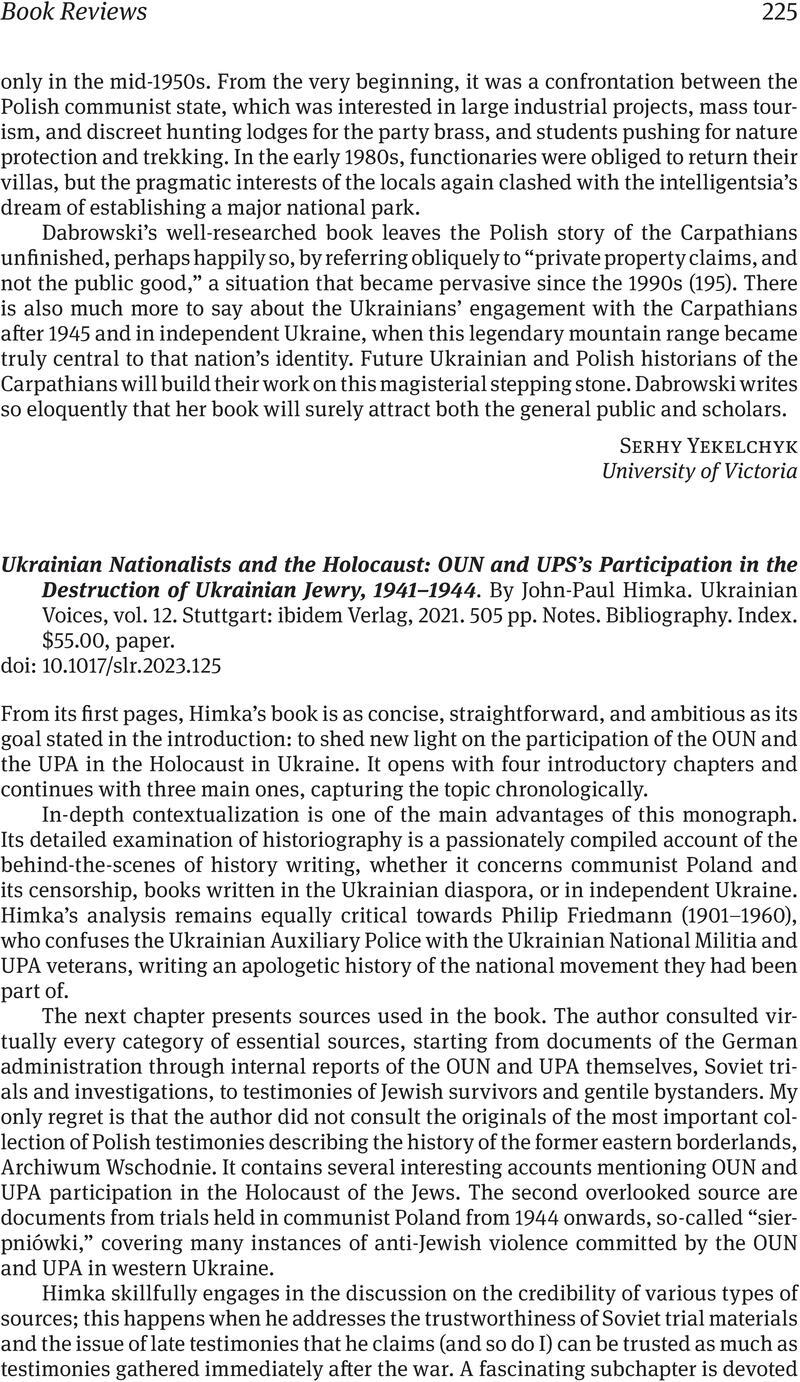Crossref Citations
This article has been cited by the following publications. This list is generated based on data provided by Crossref.
Krapfl, James
Wróbel, Piotr J.
Markiewicz, Paweł
Carynnyk, Marco
and
Himka, John-Paul
2023.
A roundtable on John-Paul Himka’s
Ukrainian Nationalists and the Holocaust: OUN and UPA’s Participation in the Destruction of Ukrainian Jewry, 1941–1944
.
Canadian Slavonic Papers,
Vol. 65,
Issue. 3-4,
p.
453.



